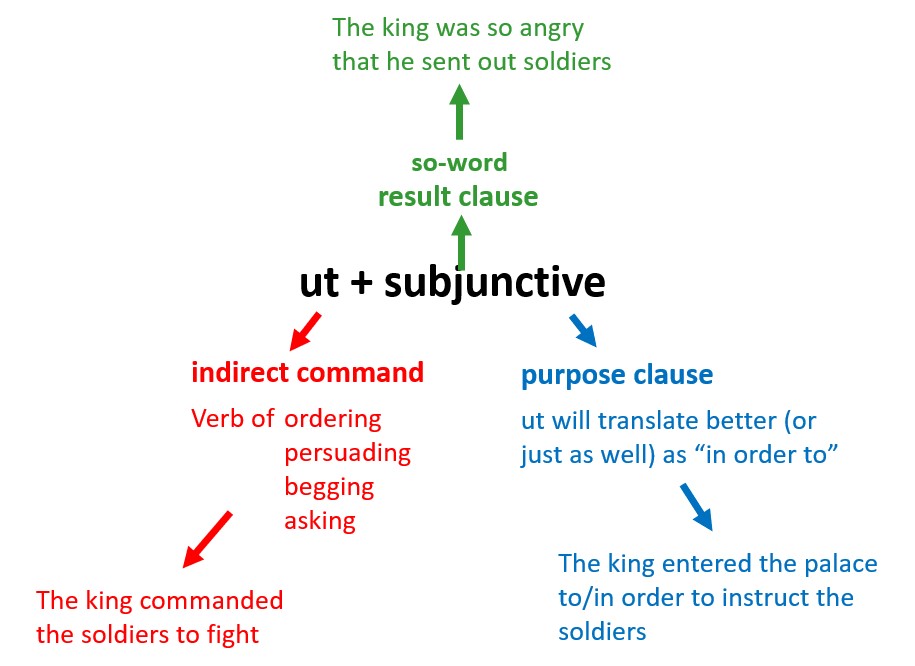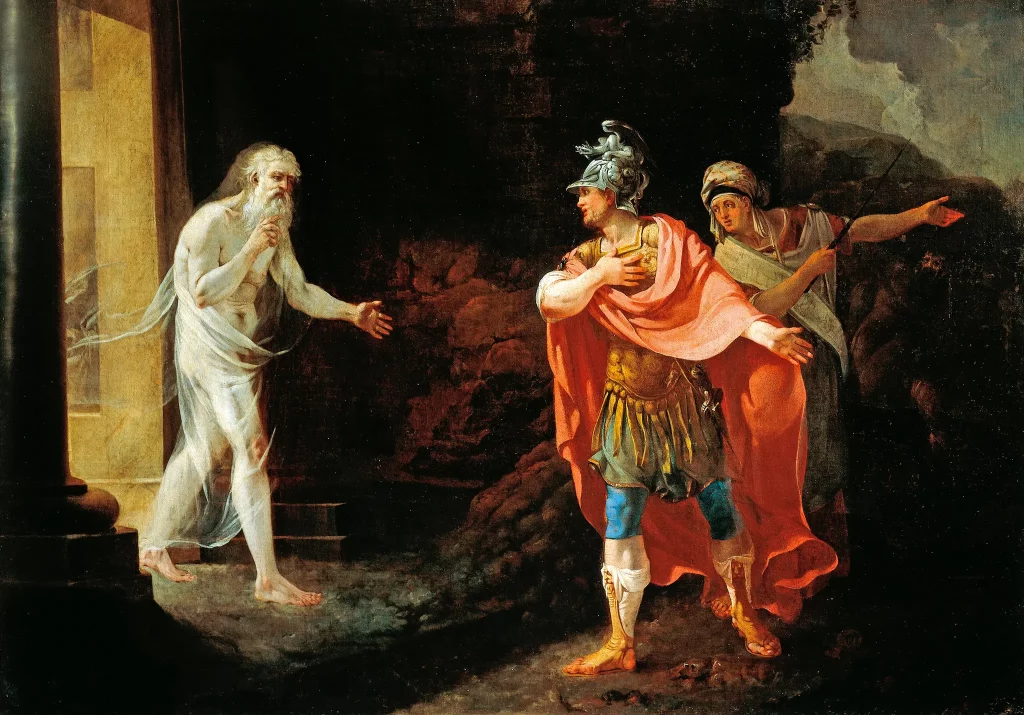A few years ago I had something of an epiphany about why so many students struggle to translate the indirect command correctly. This is the kind of epiphany I am blessed with – nothing earth-shattering that will change the future of humanity as we know it; just a little tweak when it comes to how Latin might be best taught – we all need some kind of claim to fame.
Now I work solely as a private tutor I have the privilege of insight into how students are taught in a myriad of different schools. One consistent pattern is that the uses of the subjunctive are always taught in a particular order and most notably, the indirect command is consistently taught after the purpose clause. I think I know why this is and it’s for the same reason I did this myself for several years: it’s how it’s done in the Cambridge Latin Course. Even Taylor & Cullen introduce ut + subjunctive in this way: purpose clause first, followed immediately by the indirect command. But after my epiphany, I started to switch this around.
I have yet to come across a single student who has been taught the indirect command prior to the purpose clause unless they have been taught by me, and this is fascinating. Is it really the all-pervasive, insidious influence of the Cambridge Latin Course? Given that my focus for this piece is entirely on secondary schools and given that the majority of those still use (or have used) the Cambridge Latin Course over the years, I suspect it is. But I suddenly realised what a huge mistake it is to teach the purpose clause first: I realised that this is why students are so wedded to translating ut as “in order to” whenever they see it: because that is how they first see it and after that they can’t let it go.
So let me explain the alternative approach, which I started to use when I was still teaching in school and the approach I use to help my tuteees now with huge success. First of all, when I introduce the subjunctive, I do continue to teach the use of cum + subjunctive first, followed by the indirect question. This follows the pattern used by the Cambridge Latin Course and I think it is a good one: these two constructions both require no complexity when it comes to translating the tense of the subjunctive verb and are hence a good introduction to the uses of the subjunctive. I believe that at GCSE it is important to emphasise that there is nothing special about the way in which subjunctive verbs are translated in subordinate clauses; as soon as we get onto the indirect command and purpose clause the students have to learn to move beyond translating the tense of the verb in its literal sense, so they need to gain a little confidence first.
After I have taught the endings of the subjunctive and the first two uses as above, I then within one lesson (or tutoring session) introduce two uses of ut + subjunctive and explain that they are difficult to tell apart – I also explain that being able to differentiate between them is important for the grammar questions in the GCSE examination. I then explain that their default translation for ut should be “to” and explain the indirect command in detail: that the definition of a command-word is broad: begging, persuading or even asking counts as a command, as it basically includes any verb which is trying to get somebody to do something. I emphasise that the ut should always be translated as “to”. I show a few examples and reassure them that it is correct not to translate the tense of the imperfect subunctive – just translate the meaning of the verb after “to”, just as if it were an infinitive.
I then introduce the purpose clause and point out how similar it is as the ut can still be translated as “to”. I then exlain that the test to see whether or not it is in fact a purpose clause is to try out whether one can also translate ut as “in order to” or “so that he/they could”. If that’s possible, then it’s a purpose clause. I then spend the remainder of the session showing them a series of mixed examples and asking them to identify whether each sentence is an indirect command or a purpose clause. I stick almost exclusively to vocabulary required for GCSE and also provide vocabulary support to lighten their cognitive load – this is essential no matter what you are teaching.

One of the worst reasons for doing something is solely because we’ve always done it this way. In teaching it is always important to keep asking yourself why: why this topic? Why those things in that order? Why this? Why this now? If you don’t stop and ask yourself these questions on a regular basis, you end up doing things solely for the sake of it, solely because that’s what you’re used to and solely because it needs to be done at some point. Given how embedded the problem is that students regularly fail to recognise and translate the indirect command correctly, it is actually rather worrying that more teachers don’t seem to have asked themselves why this is. Pretty much every single student I meet, without fail, when presented with a simple sentence such as dux militibus imperavit ut oppugnarent will immediately say, “the leader commanded the soldiers in order to attack”. Perhaps more worrying, a large number of those students seem puzzled when it is pointed out to them that this translation doesn’t actually make a whole lot of sense. As a tutor, I have to break down their wedded belief that ut means “in order to” and explain why – most of the time = it actually doesn’t mean that at all.
Obviously there is third use of ut + subjunctive required at GCSE, which is the result clause. I teach this next but in a different session to emphsise that it works quite differently from the other two.

I then do lots of work on how to spot the difference between each of the three types of ut-clauses and I always word the question in the manner that they will face in the GCSE exam: why is oppugnarent in the subjunctive mood? The more they get used to the teacher or their tutor asking them this question, the easier the grammar questions will be for them. Some students have to be reminded that “because it’s used after ut” is not an answer to this question, as the examiner wants them to differentiate between the three clauses.







